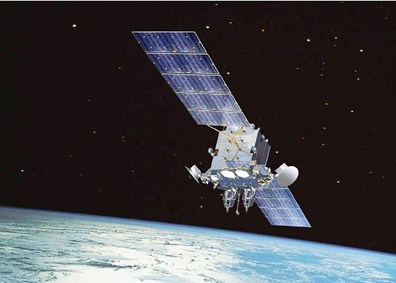
Artistic rendition of the AEHF-1 spacecraft
The first Advanced Extremely High Frequency space vehicle will arrive at its orbital slot in late October, instead of October 3, as projected in June. In August of 2010, when AEHF-1 was launched, it experienced lower-than-expected thrust from its main bi-propellant engine (Liquid Apogee Engine). A team of United States Air Force military, federal civilian, Lockheed Martin and Aerospace Corporation engineers at the Space and Missile Systems Center’s Military Satellite Communications Systems Directorate revised the AEHF-1 orbit-raising profile to use Hall Current Thrusters to raise the spacecraft to its intended operational orbit while maintaining the safety of the vehicle and conserving on-board fuel. The decision to slow down the orbit-raising plan was made to balance operational needs, space environmental factors and vehicle conditions.
“As we go forward, we’re careful to understand the use of those thrusters and are monitoring closely the amount of fuel we’re using in order to continue to optimize overall satellite performance,” said Mr. Dave Madden, director of SMC’s MILSATCOM Systems Directorate. “Currently, there are no changes to the previously anticipated mission capabilities at the completion of orbit transfer.
AEHF is a joint service satellite communications system that will provide survivable, global, secure, protected, and jam-resistant communications for high-priority military ground, sea and air assets. The AEHF System is the follow-on to the Milstar system, augmenting, improving and expanding the MILSATCOM architecture. The satellite remains stable and under Air Force control and is projected to meet its required 14 years of mission life. AEHF is developed by the MILSATCOM Systems Directorate at Los Angeles AFB, Calif. The MILSATCOM Systems Directorate plans, acquires and sustains space-based global communications in support of the president, secretary of defense and combat forces. The MILSATCOM enterprise consists of satellites, terminals and control stations and provides communications for more than 16,000 air, land and sea platforms.

